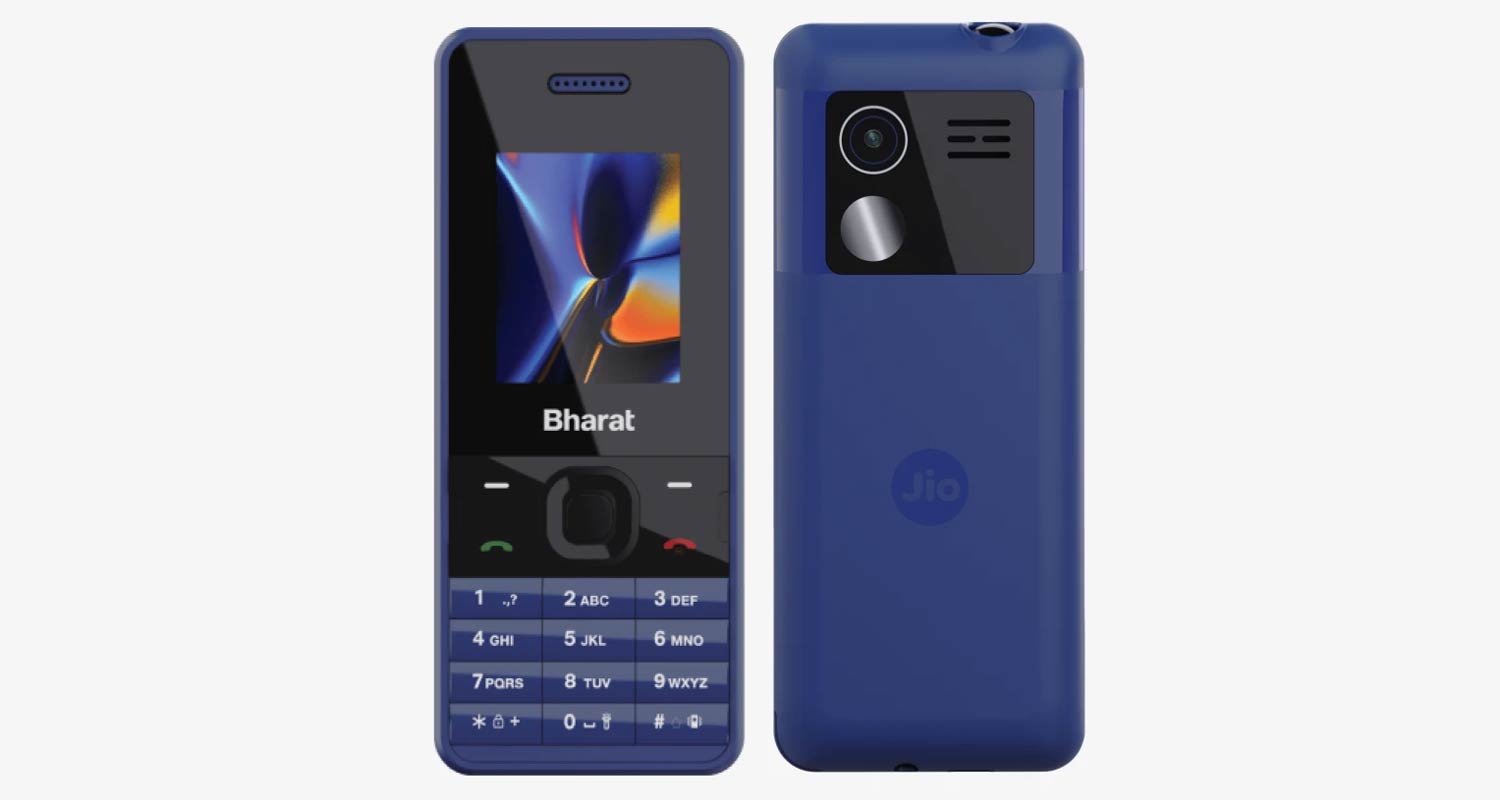 The Jio Bharat V2, made by Indian telecommunications operator Reliance Jio, is a US$12 (R215) 4G device that makes smartphone features available at 2G prices.
The Jio Bharat V2, made by Indian telecommunications operator Reliance Jio, is a US$12 (R215) 4G device that makes smartphone features available at 2G prices.
The so-called “smart feature phone”, though it resembles a dumbphone with a keyboard and relatively small screen, is capable of video streaming, digital payments and chat messaging, and includes support for WhatsApp.
The Joi Bharat V2 is designed to give 2G device owners the option to upgrade within their price range while offering a richer feature set than they could usually afford.
The V2 has a classic, 10-digit keypad with star and hash keys below a 1.77-inch full-colour display. It has 512MB of RAM and 4GB of storage, which can be extended by 128GB using an SD card. The V2 has a 0.3-megapixel rear camera and a 1 000mAh battery. It does not, however, support Wi-Fi.
All Jio Bharat phones – there are five in the range, including the V2 – run KaiOS, a web-based operating system designed for low-memory devices and internet-of-things (IoT) applications. It evolved from Mozilla’s Firefox OS open-source project and can run popular apps such as WhatsApp, YouTube and Google Maps.
KaiOS has partnerships with device manufacturers outside India, too. Sprint, AT&T and T-Mobile have devices that run on their networks in the US. Newer partnerships with British electronics manufacturer Bullitt and Nokia brand licensee HMD Global are also in the works.
Digital economy
The most significant impact of the Jio Bharat on India’s economy is it improves smartphone penetration rates, promotes digital inclusivity and allows poorer citizens to participate in the digital economy. The UPI rapid payments platform – India’s equivalent of South Africa’s PayShap – is integrated into the Jio Bharat V2, allowing users to make instant payments to anywhere in India.
Smartphone penetration is a problem that South Africa – and the rest of the African continent for that matter – shares with India. The cheapest 3G smartphone in South Africa costs around R400, while the cheapest 4G device costs around R1 000.
Read: Telecoms industry warns against forced 2G shutdown
Prior to the Covid-19 pandemic and subsequent lockdowns in 2020, MTN Group held discussions with various device manufacturers in an effort to design a $20 phone for its African markets.
MTN Group CEO Ralph Mupita said earlier this week that the company had to abandon the project when Covid-19 disruptions to global supply chains led to a spike in the cost of chipsets, rendering the project unfeasible.
For MTN, $20 is an inflection point where enough African consumers would find a 4G device affordable enough to drive a surge in adoption.

Some progress is being made in East Africa by asset financing fintech M-Kopa, which has built intellectual property around reliable data collection for lending purposes in cash-driven markets where the population is largely unbanked. The M-Kopa solution is helping improve device affordability metrics in countries such as Uganda and Kenya. However, according to Mupita, this model does not translate well in all markets and has not taken off to the same extent in Nigeria, for example.
While financing solutions like M-Kopa’s can help make the purchase of smartphones more feasible for certain segments of the market, there are still those that are priced out and for whom a cheaper 4G device is the only viable option for owning a smartphone.
At $12, a device like the Jio Bharat could go a long way in reaching Africa’s unconnected and introducing them into the digital economy. A key component in making these devices affordable, however, is the removal of taxes associated with their importation – a key source of revenue for many African countries.
In January, India’s government cut import duties on components for smartphone manufacturing from 15% to 10%.
“Countries like Rwanda are now slashing those taxes because they have done their calculations and seen that the benefits of getting their people on 4G-capable devices are greater than the taxes they would collect on import duties. But the edict must come from the top: asking a treasury department to slash taxes is difficult because their job is to maximise [revenue for] the fiscus. It must come from above,” said Mupita. – © 2024 NewsCentral Media
Read next: Africa has a feature phone problem
This article was originally published by a techcentral.co.za . Read the Original article here. .


